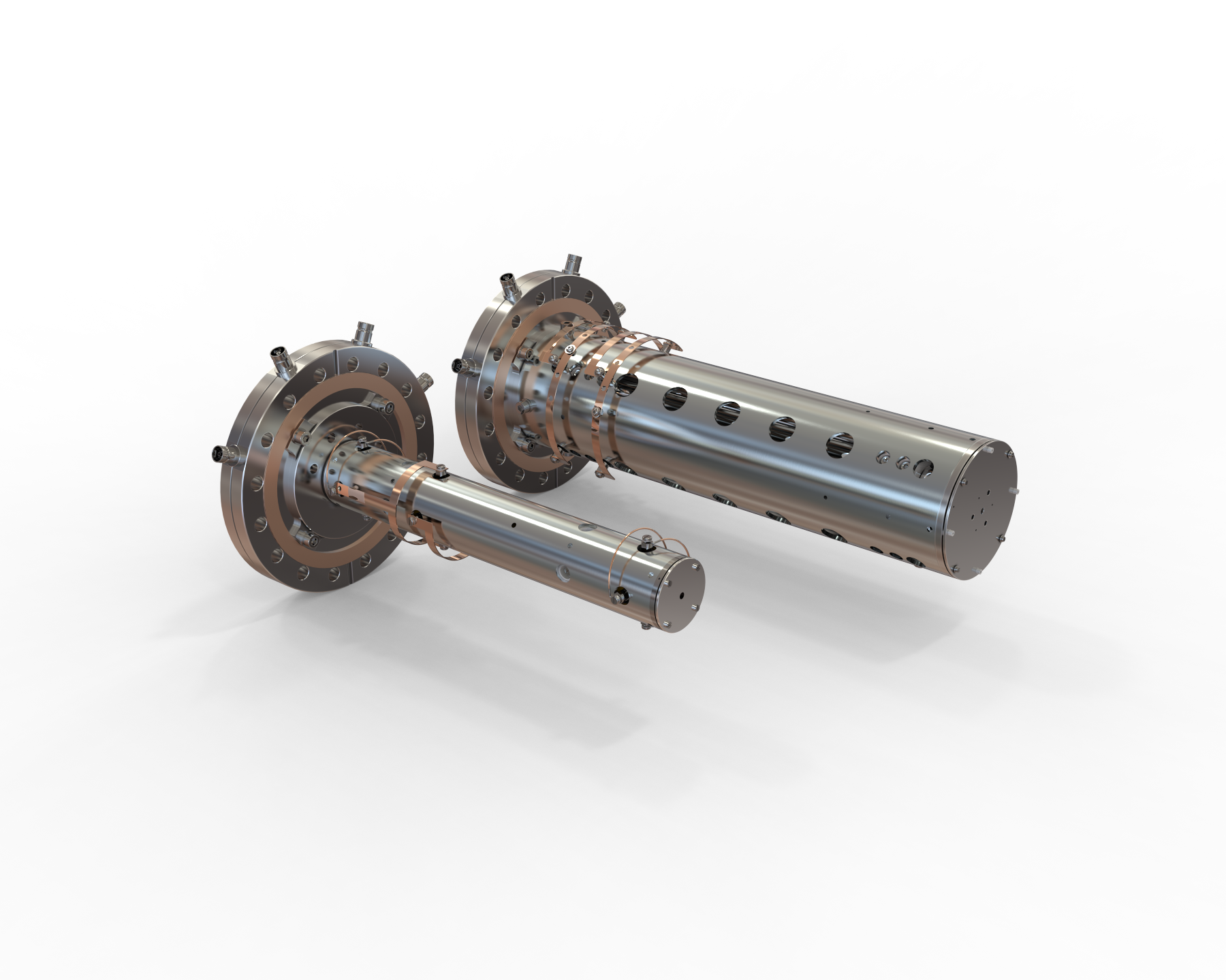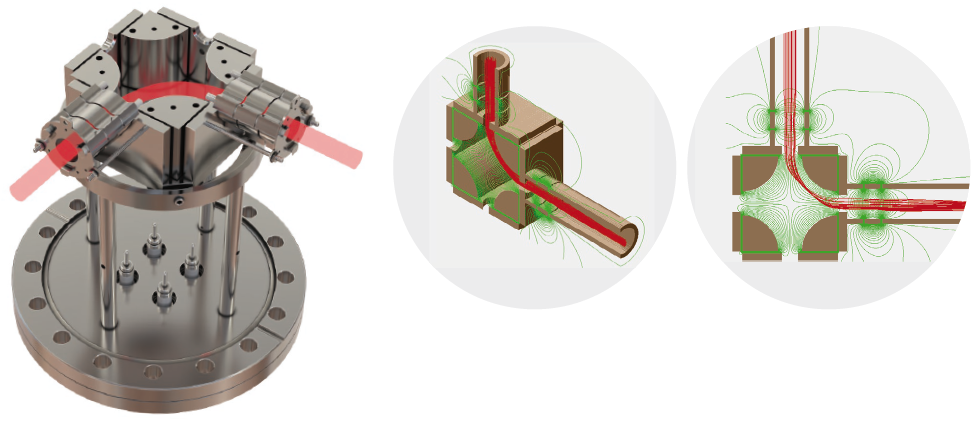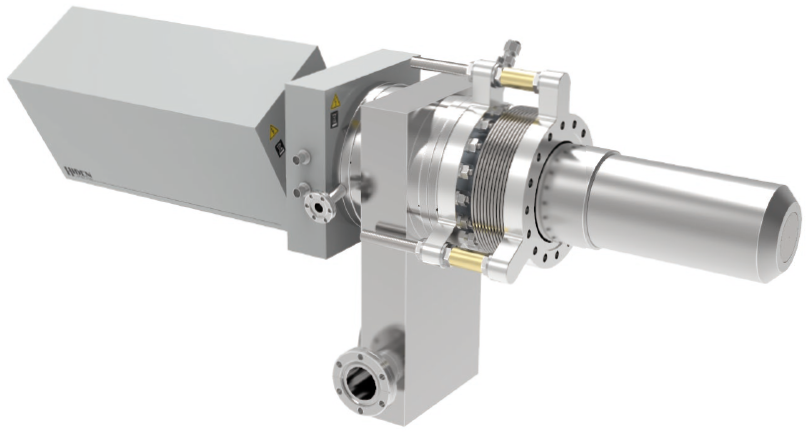Quadrupoles and Components for Cluster Analysis and Nanoscale Particles
Nanoparticles and clusters can be produced from a wide range of sources like magnetron sputtering, electrospray ionization and laser evaporation at pressures ranging from sub-millibar to atmospheric.
The quadrupole mass filter has a major role in the mass selection and transport of these ions. This is because it features adequate mass resolution and a 100% duty cycle. Size-selected clusters production serves two key applications — cluster deposition and spectroscopy.
High transmission ion redirection components are essential for exclusive applications like the removal of photons and neutrals in spectroscopy before characterizing them in an ion trap using x-rays. For such applications, Hiden Analytical offers tailored transfer quadrupoles and beam deflectors with a rod diameter of up to 20 mm (DLS-20).
Cluster Analysis with Hiden Analytical
A quadrupole filter’s upper mass limit is highly constrained by the need for RF power that comes along with increasing mass range (m/z). Although this issue can be overcome by down-sizing the rod diameter, it causes a major decline in the Quad performance, which affects its effectiveness for clusters at high m/z.
The solution to this problem is using Hiden’s High Power RF Generator that can deliver a mass range of 5,000 m/z even on a 9-mm Triple Filter Quad at a frequency of 0.8 MHz. This combination ensures excellent performance.
This feature enables transmission of 45% at a mass range of 5,000 m/z, thus ensuring the lowest detection limit even for the largest clusters. The special combination of 9-mm rods, triple filter, and high-frequency RF generator from Hiden offers superior resolving power, even at the highest mass range.
Flexibility — Optimizes the Balance Between Resolving Power and Mass Range
The combination of the new 20-mm tri-filter quadrupole and 400-kHz RF head from Hiden helps realize a mass range of up to 4,000 amu. By contrast, Hiden’s 9-mm tri-filter helps achieve a mass range of up to 20,000 amu.
Table 1. Source: Hiden Analytical
| Quadrupole Mass Spectrometers Performance for Higher Mass Ranges |
| |
|
Quad |
Features with Triple Filter |
Relative Transmission |
Resolving Power (FWHM) |
Sensitivity |
| Product |
Part |
Triple Filter 3F |
Rod Dia mm |
Rod Length mm |
Min mass |
Max mass |
Frequency MHz |
Relative Transmission |
Measured at mass |
M/
ΔM |
Mass/
amu |
mA/
torr |
| EPIC 1000 |
571009 |
3F9-
1000 |
9 |
200 |
1 |
1,000 |
1.60 |
43% |
40 |
1,200 |
40 |
0.3 |
DLS-
1000 |
572605 |
DLS-
20 |
20 |
200 |
1 |
1,000 |
0.82 |
65% |
40 |
1,800 |
40 |
1 |
| EPIC 2500 |
482509 |
3F9-
2500 |
9 |
200 |
1 |
2,500 |
1.00 |
39% |
40 |
1,500 |
40 |
0.2 |
DLS-
4000 |
572606 |
DLS-
20 |
20 |
200 |
10 |
4,000 |
0.40 |
65%* |
4,000 |
1,500* |
4,000 |
0.5* |
| EPIC 5000 |
485059 |
3F9-
5000 |
9 |
200 |
10 |
5,000 |
0.82 |
45% |
5,000 |
2,500 |
5,000 |
0.1* |
| EPIC 20000 |
485060 |
3F9-
20000 |
9 |
200 |
100 |
20,000 |
0.40 |
10%* |
20,000 |
1,000* |
20,000 |
0.05* |
* Figures based on Ion Modelling projection.
Features
Key Features
- Switchable zones of operation
- Mass range of up to 20,000 amu
- Frequencies varying from 0.4 to 5 MHz
- 100 W of true RF power
- Ultra-stable voltage
- Pole bias, or “energy,” capability
Applications
- Spectroscopy
- Molecular clusters
- Nano-structures
- Cluster deposition
- Ion redirection
- Ion clusters
Cluster Analysis Components

Transfer quadrupoles: 9 mm and 20 mm pole diameter quadrupoles mounted on DN-150-CF double-sided Conflat flange. Image Credit: Hiden Analytical

Beam deflector: With adjustable tilt, part number 582000. Image Credit: Hiden Analytical
Systems for UHV Analysis of Neutrals, Radicals and Ions, Including Electron Impact Ionizer, SEM Detector and Ion Optics
The EPIC 1000 series features a mass range of up to 20,000 amu to support gas-phase cluster studies. The series also comes with a wide array of unique sampling inlets on demand.
Besides including all the features of high-performance RGAs, the Hiden EPIC and Ion Desorption Probe (IDP) also feature pole bias mid-axis potential and negative ion capability. This makes them superior research-grade mass spectrometers.
The Hiden IDP serves as a tool for the direct analysis of low-energy ions generated from UHV surface science techniques. This tool finds various applications such as thermal desorption studies, electron-stimulated desorption and photon-stimulated desorption.
The EPIC system can be factory-upgraded to add an energy-filter, such as the 45° sector field or Bessel box type. This option ensures compatibility with the Hiden plasma/SIMS series, such as the EQS, EQP, SIM and PSM probes.

Hiden EPIC 5000 system: With differential pumping and port aligner. Image Credit: Hiden Analytical
Hiden Applications
The quadrupole mass spectrometer systems from Hiden Analytical have a wide range of applications:
Gas Analysis
- Catalysis and thermal analysis
- Dynamic measurement of reaction gas streams
- Dissolved species probes
- Molecular beam studies
- Environmental, ecological and fermentation studies
Surface Analysis
- Ion beam etch end-point detection
- UHV TPD
- Elemental imaging — 3D mapping
- SIMS
Plasma Diagnostics
- Neutral and radical species studies
- Analysis of kinetics behind etch and deposition process reaction
- Characterizing plasma source
Vacuum Analysis
- Reactive sputter process control
- Control of process gases and partial pressure measurement
- Monitoring vacuum coating process
- Vacuum diagnostics